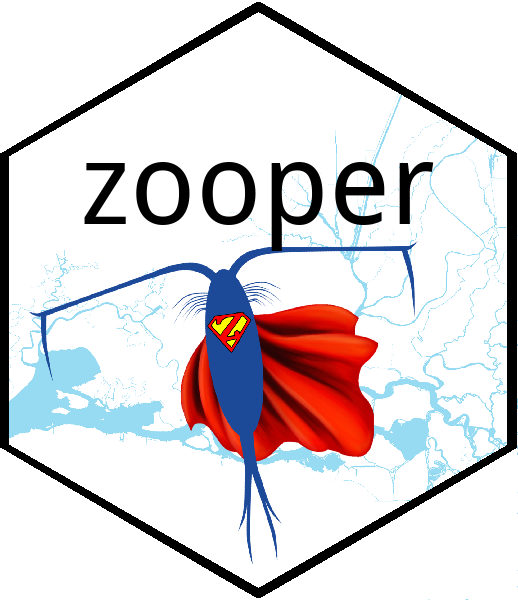Code and files related to zooplankton synthesis
The code has been incorporated into a new R package zooper.
R users can install the R package to download and integrate zooplankton datasets with our code.
We have also produced a shiny app (see below), which is a GUI (graphical
user interface) that allows folks without R experience to integrate and
download zooplankton datasets. It offers the same functionality as the
zooper package, without requiring the users to write code. The shiny
app also allows folks of all experience levels to easily visualize the
data.
The R shiny app can be accessed here.
The full shiny app can also be downloaded and installed to your computer by downloading and running the installer. This desktop version of the app can only be installed on windows computers and google chrome must be installed. If R is not already installed on your computer, this installer will install R as well.
NOTE: during installation, you will probably receive 1-2 scary looking errror messages saying “Access is denied.” These can be safely ignored, the app will still install correctly.
After installation, the app can be opened like any other desktop windows application. It may take a while to start up (especially the first time you open it). The app will open in a google chrome tab. Simply close the tab to exit the app.
The biggest problem with integrating zooplankton datasets is variability in taxonomic resolution. To resolve this, we have developed 2 approaches to consolidating inconsistent data to “least common denominator taxa.” Depending on what type of analysis you wish to run, you may wish for different types of synthesized data.
I want to analyze the community composition at whatever taxonomic level lets me use all these datasets.
- Consistent taxonomic categories
- No plankters counted more than once
- Sacrifices some taxonomic resolution
- Removes taxa with no relatives in all datasets (eg., Annelida)
I want all possible data on these specific taxa.
- Calculates total CPUE for higher taxonomic levels
- Some plankters appear in multiple nested taxa (e.g., Calanoida, Copepoda)
- Perserves taxonomic resolution and creates taxonomic categories that are comparable across all datasets
- Labels taxa that are comparable across all datasets, warns about those that are not.
We have integrated zooplankton data from 3 net size classes:
- Macro (500-505 μm): Amphipods and mysids (NOTE: Prior to 1974 EMP macrozooplankton were sampled with a 930 μm mesh net)
- Meso (150 - 160 μm): Copepods, cladocera
- Micro (43 μm): Copepods, rotifers
Nets accurately sample zooplankton larger than the mesh size. Zooplankton smaller than the mesh size are still captured and often recorded in datasets, but the resulting CPUEs are not accurate. To account for this we:
- Resolve taxonomic resolution separately within each net size class.
- If
Data = 'Taxa', we mark “summed groups” with the net size class from which they were derived. - All potentially undersampled data are marked with a flag
Undersampled == TRUE - For the plots in the shiny app, all data with
Undersampled == TRUEcan be removed. However, data downloaded from the app do contain undersampled data.
For many studies, taxonomic resolution has changed over time. This could confound analyses of zooplankton communities and abundances over time. To account for this, we have implemented a solution for the “Community” option, which can be selected as an option when the “Community” data type is selected.
We first find all taxa that were not counted every year across the date range the user inputs (but taking into account the years non-native species were introduced and each survey first started sampling). These taxa are then summed to higher taxonomic levels, as is done for taxa that were not counted across all datasets.
Often, non-native species are not added to zooplankton species list the same year they are first detected in the system. To allow for some lag between introduction years and the years these species were first counted, you can adjust the slider to choose the number of lag years (currently defaults to 2 years).
